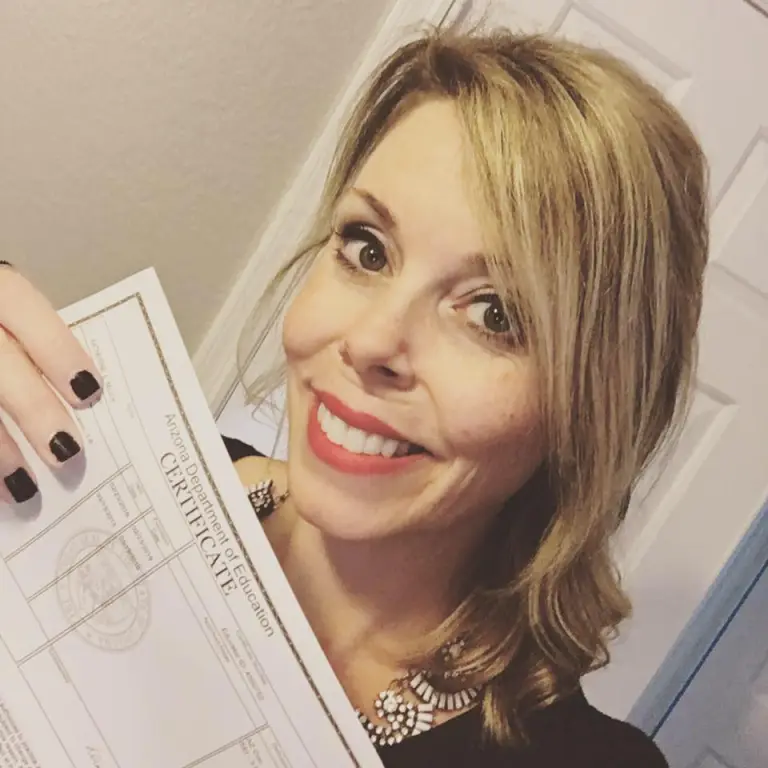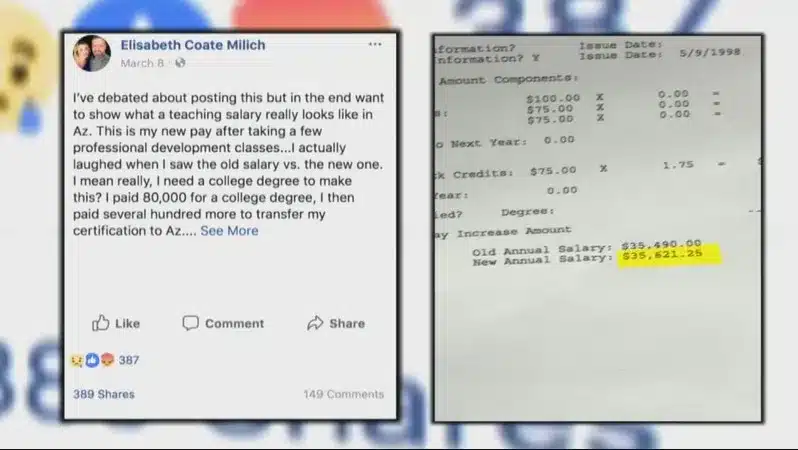A school teacher, joining the ongoing debate over educator pay, posted her pay stub online, sparking significant uproar amidst a backdrop of nationwide teacher strikes.

Elisabeth Coate Milich defied societal norms by publicly sharing her pay stub on social media, a rarity in a culture where financial matters are typically kept private. As an Arizona school teacher, she aimed to shed light on the inadequacy of teachers’ salaries.
Milich highlighted the disparity between the extensive educational requirements for teachers and their insufficient compensation. Despite her efforts, her Facebook post, revealing a mere $131 increase in her annual salary from $35,490 to $35,621, garnered significant backlash and was ultimately taken down.

“I actually laughed when I saw the old salary versus the new one,” the school teacher wrote. “I need a college degree to make this? I know I don’t make a lot of money, but then when I see it in black and white I’m like ‘wow!’ I mean, I love teaching, absolutely love it, but when you see what the salary is, you cannot live on it.”
Milich, a veteran educator with years of experience, teaches second grade at Whispering Wind Academy in Phoenix. According to CBS News, the school teacher grappled with the decision to share her paycheck publicly. Ultimately, she aimed to shed light on the reality of teaching salaries in her state, despite the grim picture her paycheck portrays.

Arizona’s public school teachers are among the lowest-paid in the country. However, the $35,621 reflected in Milich’s paycheck stub doesn’t align with the average salary for educators in the state, which stands at $47,218. Still, this figure falls significantly short of the national average of $58,353 annually, as reported by the National Education Association Research.
Although the statewide average offers a more optimistic outlook than Milich’s situation, she emphasizes the financial challenges faced by teachers. Beyond their meager salaries, educators often dig into their pockets to purchase essential supplies like markers and tape for their students. Additionally, Milich highlights the burden of student loan debt, which continues to weigh on her finances even two decades after graduating from college.

This school teacher acknowledges the crucial role her husband’s income plays in their financial stability. She contrasts her situation with that of some fellow teachers who lack a second household earner. Many of her colleagues, she reveals, juggle multiple jobs to make ends meet. Some even work as waitresses after a full day of teaching kindergarten.

She asserts that surviving on a teacher’s salary alone would be nearly impossible, a sentiment supported by studies highlighting the profession’s growing instability. According to a 2017 study by Arizona State University’s Morrison Institute for Public Policy, Arizona’s teacher turnover rates are alarming, with a significant percentage leaving the profession within three years. Elementary school teachers in the state fare particularly poorly in terms of pay.

However, there’s a counterargument to consider. Critics point out that teachers work fewer days than many other full-time professionals and thus shouldn’t expect comparable wages. But is this truly an accurate assessment of teachers’ workload?
The debate prompts reflection: Are teachers truly underpaid, or is their perceived lower compensation justified by their shorter on-the-clock hours compared to other full-time professions?
